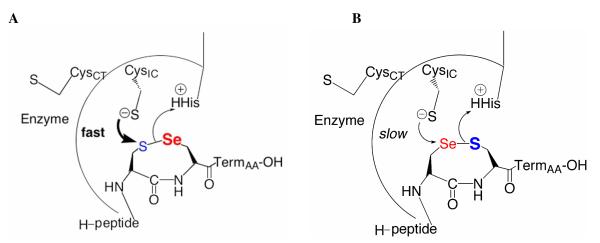Figure 5.
Importance of the position of the Sec residue in the Cys1-Sec2 dyad (forming an eight-membered ring) in the ring opening step. In the case in which Sec occupies the 2nd position of the dyad (A), the mammalian enzyme has 1130 fold higher activity than when Sec is in the 1st position of the dyad as in (B). DmTR also has a preference for the Sec residue in the 2nd position of the dyad as it has 12-fold higher activity in comparison to its native peptide sequence. In the case in which Sec occupies the 1st position of the dyad (B), DmTR only suffers a 9-fold loss in activity compared to its native peptide sequence, while the effect is severe for the mammalian enzyme as already noted. In the case of DmTR for the situation shown in (B), the sulfur atom is still in position to accept a proton from His, so the loss in activity is due to the effect of the thiolate attacking a more electronegative atom.

